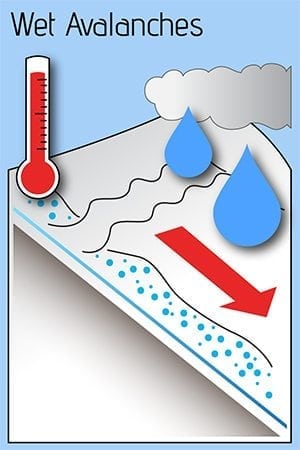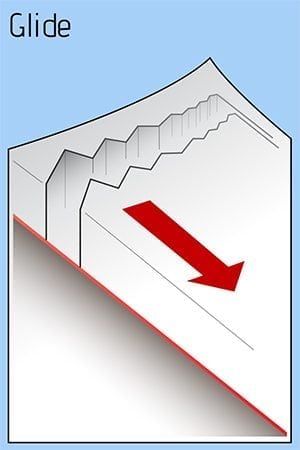Valdez
Above 4,000ftNone
2,000 to 4,000ftNone
Below 2,000ftNone
Degrees of Avalanche Danger
Avalanche Problems
Problem 1
Likelihood:
- Almost Certain
- Very Likely
- Likely
- Possible
- Unlikely
Size:
- Historic
- Very Large
- Large
- Small
Trend
- Increasing
- Steady
- Decreasing
Problem 2
Likelihood:
- Almost Certain
- Very Likely
- Likely
- Possible
- Unlikely
Size:
- Historic
- Very Large
- Large
- Small
Trend
- Increasing
- Steady
- Decreasing
Avalanche Activity
On Jan 26th, a remotely triggered soft slab avalanche was triggered near the Tonsina Glacier, in Don valley. D2, 1-3′ crown, 500′ wide. There were also several natural D1 soft slab avalanches from Jan 25-26. The reporting party presumes these avalanches to have run on buried surface hoar.
In the Tsaina valley numerous small wet loose avalanches released as soon as the sun came out on Jan 26th.
On Jan 26th multiple small wet loose avalanches were reported on steep south facing, low elevation terrain near Valdez.
On Jan 25th, a small natural soft slab was reported in very steep terrain low in Loveland Basin.
Also on Jan 25th several small wet loose avalanches were easily observable in Keystone Canyon, running down to road level.
Please share your field observations including signs of stable snow HERE.
Weather
The most recent NWS rec Forecast can be found HERE:
333 PM AKST Sat Jan 26 2019
The Thompson Pass Mountain Forecast covers the mountains (above
1000 ft) surrounding Keystone Canyon through Thompson Pass to
Worthington Glacier.
Tonight Sun
Temp at 1000` 20 F 29 F
Temp at 3000` 18-24 F 27 F
Chance of precip 0% 0%
Precip amount
(above 1000 FT) 0.00 in 0.00 in
Snow amount
(above 1000 FT) 0 in 0 in
Snow level sea level sea level
Wind 3000` ridges E 0-10 mph E 0-11 mph
Additional Information
SNOWPACK BIG PICTURE: The older snowpack is quite stable (good strength and structure). Any new snow since Jan 12 is likely to be sitting on widespread facets and surface hoar and is currently UNSTABLE. Above 3500′ there is up to 2′ of new slabs sitting on these buried weak layers.
Recent snowpack history, from top to bottom:
Jan 23-25: multiple days of warm and wet with periods of rain up to 2500′.
Jan 13-22: was mostly clear and dry with light to moderate north winds. Widespread Surface Hoar growth and Near Surface Faceting.
Jan 12-13: 3-10″ of new snow with little wind.
Jan 4-12: was VERY cold and dry: moderate winds and wind chill reaching -50F. Pockets of surface hoar and widespread Near Surface Faceting.
Dec 30-Jan 3: The New Year’s Eve storm brought nearly 2.5″ of SWE to Valdez and almost another 1″ (SWE) on the 2-3rd of January. The rain line was 1200′ during the Jan 2-3 storm, forming a 1-3″ crust locking up all the snow beneath it. These storms accumulated over 3′ above 2000′ near Thompson Pass. Both of these storms had little wind.
Above 4000′ the snowpack averages well over 300cm deep and has good strength and structure (few lemons). Below 4000′, the snowpack is significantly shallower and has old problem layers that are bonding well (rounding) and currently dormant: facet-crust combos and BASEL facets (all the way to sea level).
If you get out riding, please send in an observation.
Do a rescue practice with your partners. Always carry a beacon, shovel, and probe, and KNOW HOW TO USE THEM.
Practice good risk management, which means only expose one person at a time to slopes 30 degrees and steeper, make group communication and unanimous decision making a priority, and choose your terrain wisely: eliminating unnecessary exposure and planning out your safe zones and escape routes.
Alerts
There is no current hazard rating for the Valdez region. The most recent rating was CONSIDERABLE and the forecast details from Jan 27 are available by clicking FULL FORECAST below.
CAUTION: On Jan 26th natural and remotely triggered D2 slab avalanches were observed near Thompson Pass, on a buried weak layer. Expect more slab avalanches until this Persistent Weak Layer is either flushed, crushed, or has plenty of time to heal.
Please share your field observations HERE.


